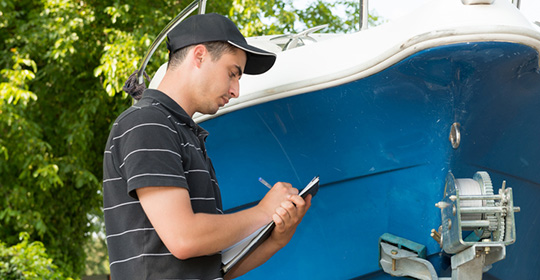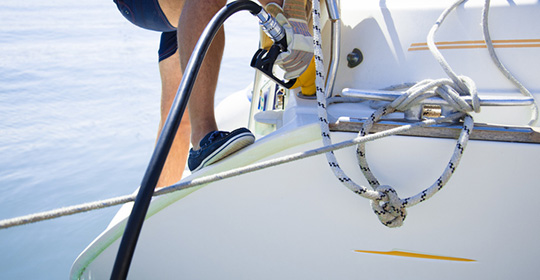How to Winterize a Boat with an Outboard Motor
By Debbie Hanson
Nov 10, 2022
How to winterize a boat with an outboard motor, including a checklist for winterizing a boat that will help you prepare your outboard for winter storage.
The process of how to winterize a boat will be different depending on if your boat has an outboard or inboard motor. If you recently purchased a boat with an outboard motor, you might be wondering if there is a winterizing boat checklist that walks you through the process of how to prepare your outboard for winter storage.
The cost to winterize a boat with an outboard engine is roughly around $250 to $300 if you decide to do it yourself. Alternatively, how much does it cost to winterize a boat if you have a mechanic do it for you? The answer to this question can depend on the size of the outboard engine, although you can probably expect to pay somewhere in the range of $500 and up.
Check out these general guidelines that cover winterizing a boat with an outboard motor.
1. Check Your Engine Service Manual
When it comes to learning how to winterize a boat motor, the first step is to check the engine owner's manual or service manual. Outboard engines (such as four-stroke or direct-injected two-stroke outboards) may have special winterizing, flushing, and maintenance instructions. Always follow the manufacturer’s instructions that are unique to your engine. When you winterize a boat and outboard motor, the manufacturer’s instructions should overrule any instructions you find on the internet.

2. Change Engine Oil and Oil Filter
Be sure to change your oil and oil filter when winterizing a boat to prevent residual moisture or contaminants from corroding your outboard engine while in storage. Start by running the outboard for a few minutes to lower the viscosity of the oil and give it a chance to pick up any impurities. Once you shut off the engine, change the oil and replace the oil filter. After replacing the filter, start the engine again and let it run for about a minute to circulate the fresh oil to internal parts.
3. Flush the Engine
The engine should be flushed according to the manufacturer’s instructions. Run the engine for about ten minutes and use a flush-muff device to deliver cooling water before draining. Newer outboard engines have a garden hose fitting that allows for a quick flush without having to start the engine at all. Be sure to check your engine’s service manual for specifics on this step.
4. Fill Gas Tank and Use Fuel Stabilizer
The gas tank should be 95% full and fuel stabilizer should be added before winter storage. Always read the instructions on the fuel stabilizer and add the right amount of stabilizer to your gas tank. Using fuel stabilizer is important because it prevents gasoline from oxidizing and leaving behind varnish-like deposits.

5. Fog the Engine with Lubricant
After treating the fuel and running the engine for a few minutes, the engine should be fogged with a storage lubricant. The lubricant protects the internal bearings, seals, and rotating surfaces with a thin film that helps to keep corrosion away. When the engine is running, inject fogging oil through the carburetors or electronic fuel injection system air intakes to flood the engine with oil. Continue fogging until the engine stalls.
6. Store Engine in Trimmed Down Position
Store your outboard engine in the trimmed down (running) position. Outboards are designed to drain all the water from their cooling systems completely when in this position. You may also want to cover your outboard engine with a vented canvas cowling storage cover after going through the winterizing process.
How do you winterize a boat? You now know the winterizing guidelines to follow if you have a boat with an outboard engine (how to winterize a pontoon boat engine also fits into the outboard category). Once you know how to winterize an outboard, the next step is to learn how to de-winterize a boat before spring arrives.









